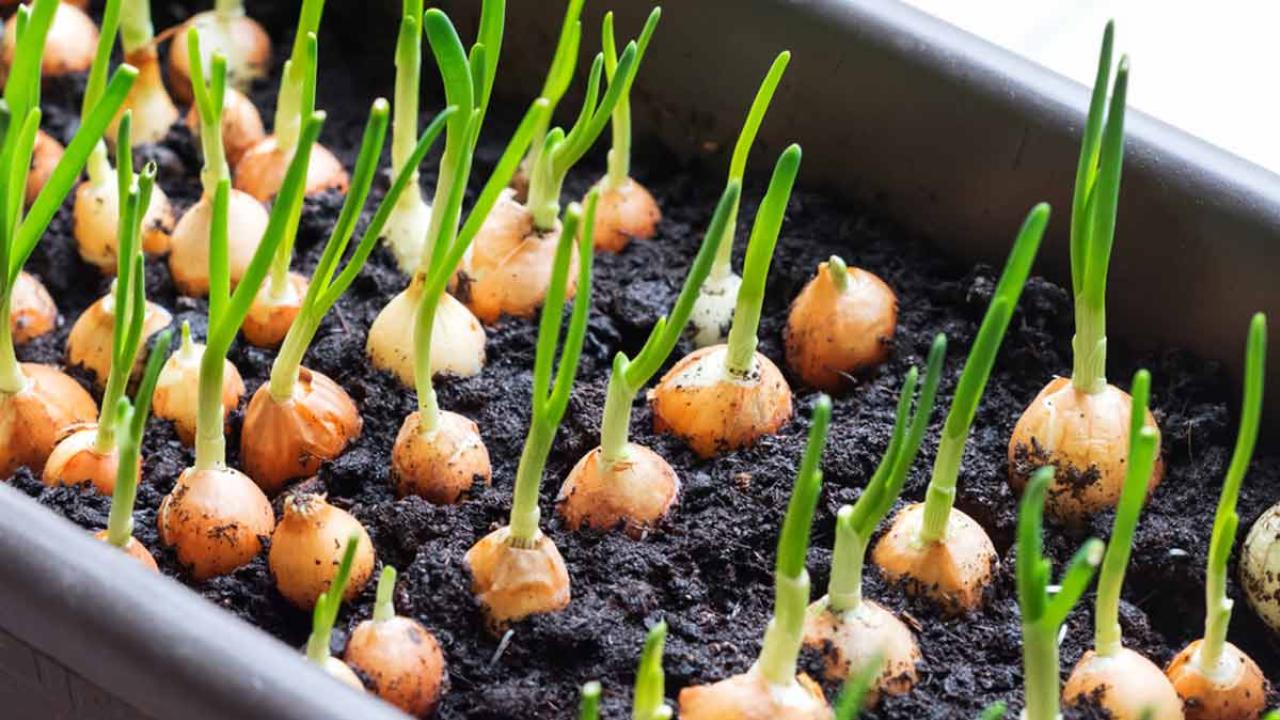Onions are a versatile and essential vegetable in kitchens worldwide. While
most gardeners may be familiar with growing onions from sets or transplants,
starting onions from seeds offers a rewarding and economical way to grow a wide
variety of onions.
1. Why Grow Onions from Seeds?
Growing onions from seeds has several advantages over using sets (small
bulbs) or transplants. First, seeds offer a much wider variety of onion types,
from sweet and mild onions to strong, pungent ones. Many heirloom and hybrid
varieties that aren’t available as sets can be easily grown from seeds. Additionally,
growing from seeds tends to result in healthier plants with larger,
better-formed bulbs because they develop strong root systems from an early
stage.
Another benefit is cost. A single packet of Onion
Seeds contains hundreds of seeds and is far more economical than
purchasing sets or transplants. Lastly, onions grown from seeds are less likely
to bolt (produce flowers prematurely), a common issue with sets. Bolting can
reduce the size and quality of onion bulbs, so starting from seed can lead to a
better yield.
2. Types of Onion Seeds
Onion seeds are generally classified based on the daylight hours required to
initiate bulb formation. There are three primary types of onions: short-day,
intermediate-day, and long-day onions. Choosing the right type of onion seed
for your location is essential for a successful harvest.
·
Short-Day Onion Seeds: These
onions need about 10-12 hours of daylight to form bulbs and are best suited for
southern regions with mild winters. Short-day onions are usually planted in the
fall and harvested in late spring. Popular varieties include Texas Grano, Red
Creole, and White Bermuda. These onions are often sweet and store well.
·
Intermediate-Day Onion Seeds:
Requiring 12-14 hours of daylight, intermediate-day onions are versatile and
can be grown in both southern and northern climates. Varieties such as Candy
and Super Star are popular choices for their mild flavor and medium storage
life. These onions are typically planted in early spring and harvested in late
summer.
·
Long-Day Onion Seeds: Long-day
onions need 14-16 hours of daylight to form bulbs, making them ideal for
northern regions where summer days are long. Popular varieties include Walla
Walla, Yellow Sweet Spanish, and Redwing. Long-day onions tend to have a
stronger flavor and a longer shelf life compared to short-day varieties. They
are planted in early spring and harvested in late summer or early fall.
3. Planting Onion Seeds
Growing onions from seeds takes a bit more time and effort than using sets,
but the results are well worth it. Follow these steps for a successful onion
crop.
·
Start Indoors: Onion seeds
should be started indoors about 8-12 weeks before the last expected frost date.
Sow the seeds in seed trays or pots filled with a seed-starting mix. Plant the
seeds about 1/4 inch deep and keep the soil consistently moist. Onions need
warmth to germinate, so place the trays in a warm, sunny location or use a heat
mat to encourage germination. The seeds should sprout within 7-10 days.
·
Transplanting: Once the onion
seedlings have grown 4-6 inches tall and the outdoor temperature has warmed,
they can be transplanted into the garden. Choose a sunny location with
well-drained, nutrient-rich soil. Onions are heavy feeders, so it’s a good idea
to work compost or organic matter into the soil before planting.
Space the seedlings 4-6 inches apart in rows that are 12-18 inches apart.
This spacing allows for proper air circulation and enough room for the bulbs to
develop. Be gentle when transplanting to avoid damaging the seedlings’ delicate
roots.
4. Caring for Onion Plants
Onions require consistent care throughout their growing season to ensure a
successful harvest. Here are some important factors to consider:
·
Watering: Onions have shallow
roots and need regular watering, especially during dry periods. Aim to provide
about 1 inch of water per week. However, be careful not to overwater, as onions
are susceptible to root rot if the soil becomes waterlogged. Mulching around
the plants can help retain moisture and reduce the growth of weeds.
·
Fertilization: Onions are
nutrient-hungry plants. During the growing season, it’s essential to fertilize
regularly with a balanced fertilizer or one high in nitrogen. Nitrogen promotes
healthy leaf growth, which in turn helps the onion bulbs develop. Apply
fertilizer every 2-3 weeks until the bulbs start forming.
·
Weeding: Onions do not compete
well with weeds due to their shallow root systems. Regular weeding is necessary
to prevent weeds from stealing nutrients and water. Be careful when weeding to
avoid disturbing the onion plants. Mulching can help minimize weed growth.
·
Pest Control: Onions are
relatively hardy and resistant to many pests, but they can be affected by onion
maggots, thrips, and fungal diseases. To reduce the risk of pests, practice
crop rotation and avoid planting onions in the same spot year after year. If
pests become a problem, consider using organic insecticides or companion
planting with pest-repellent plants like garlic or marigolds.
Get More Insights on Onion
Seeds
Missing comfort of reading
report in your local language? Find your preferred language :

